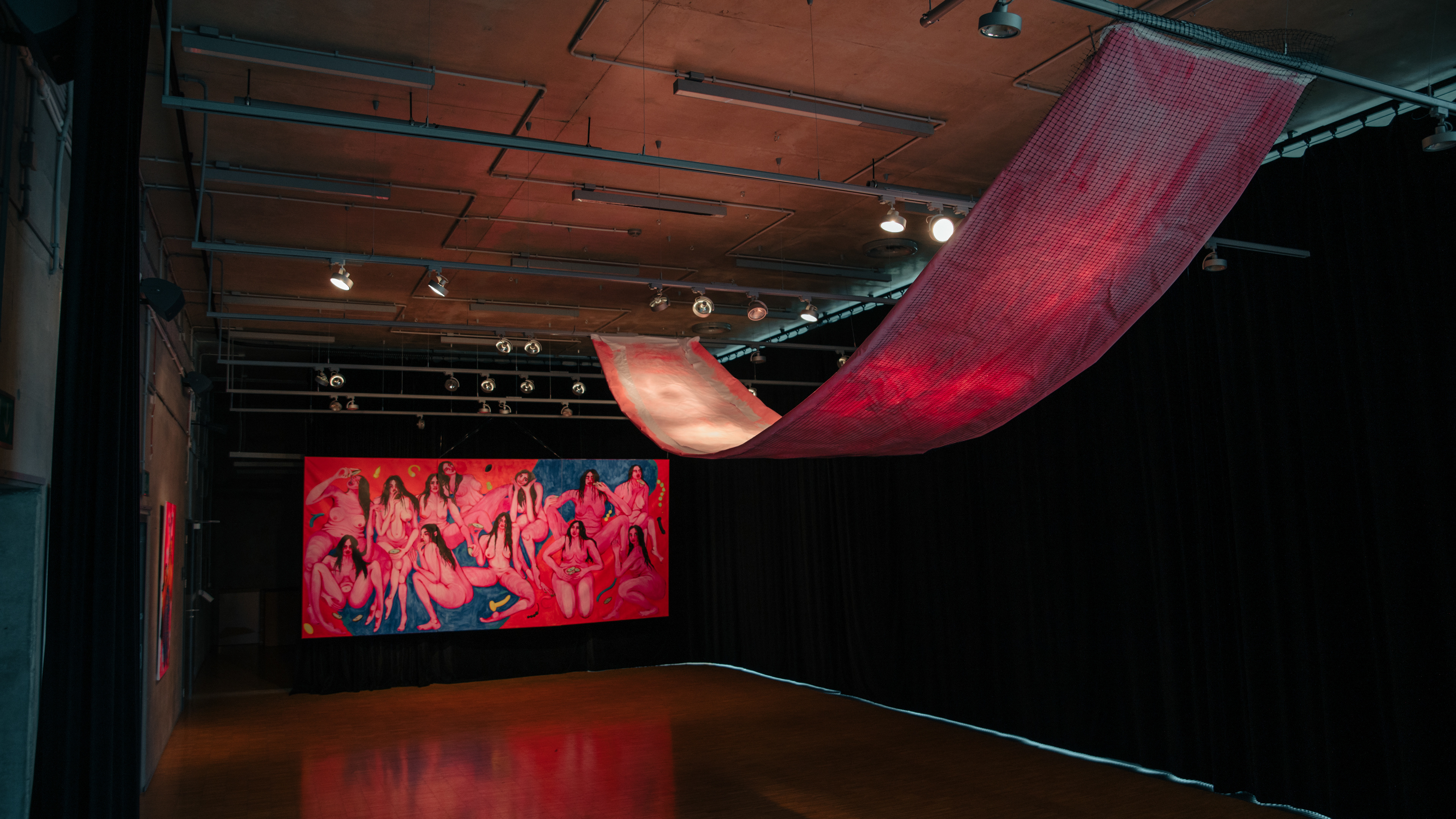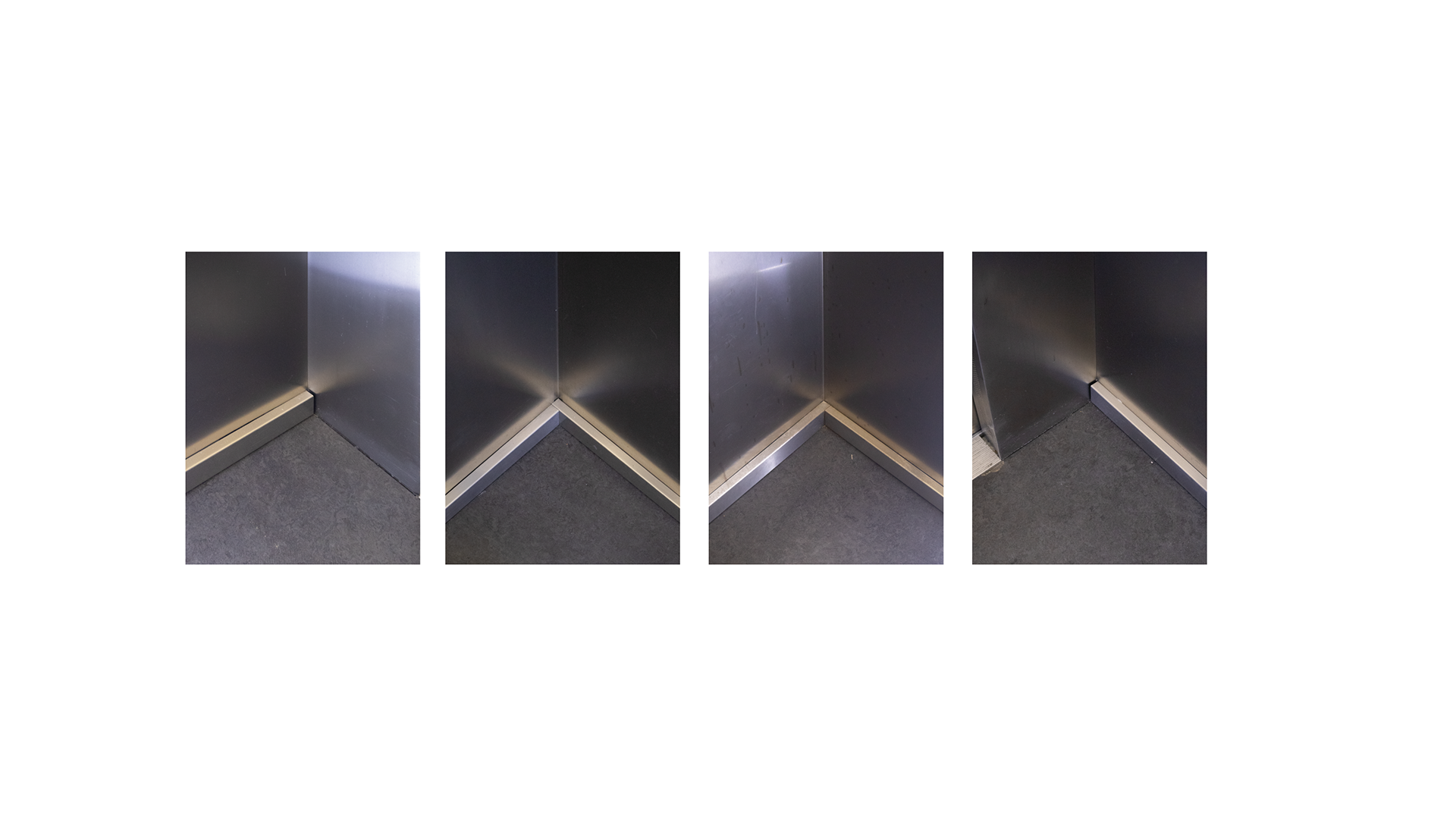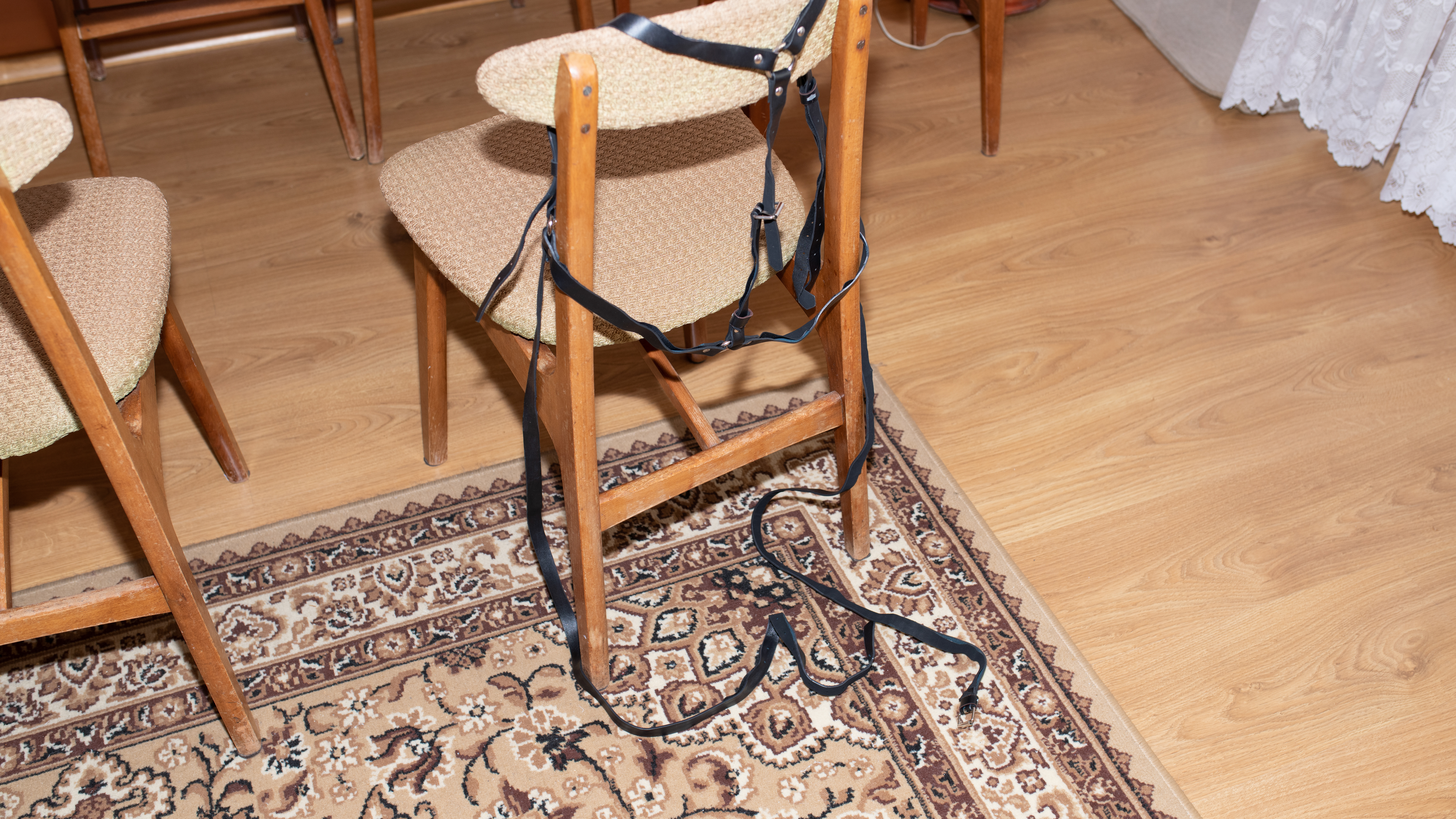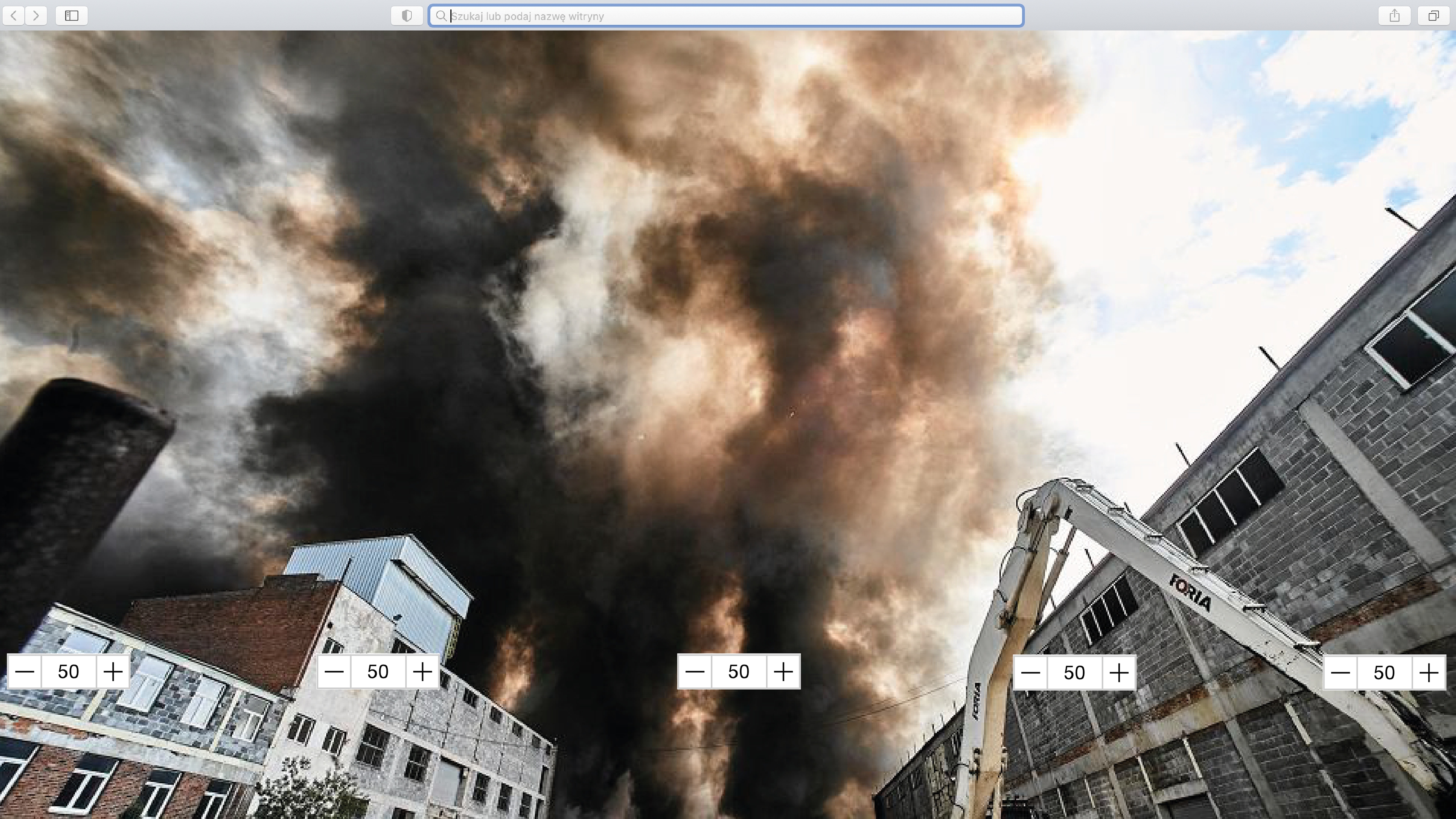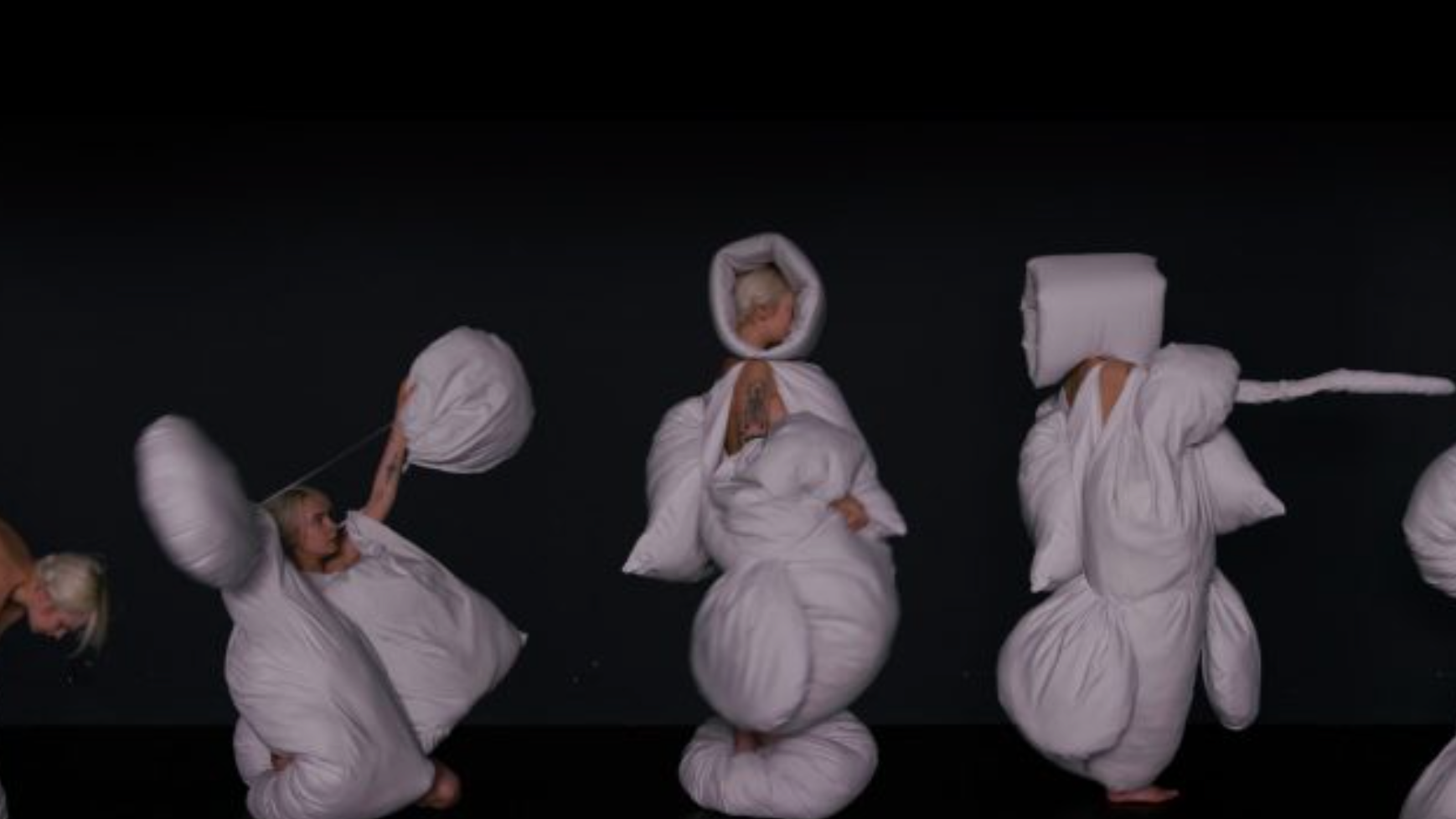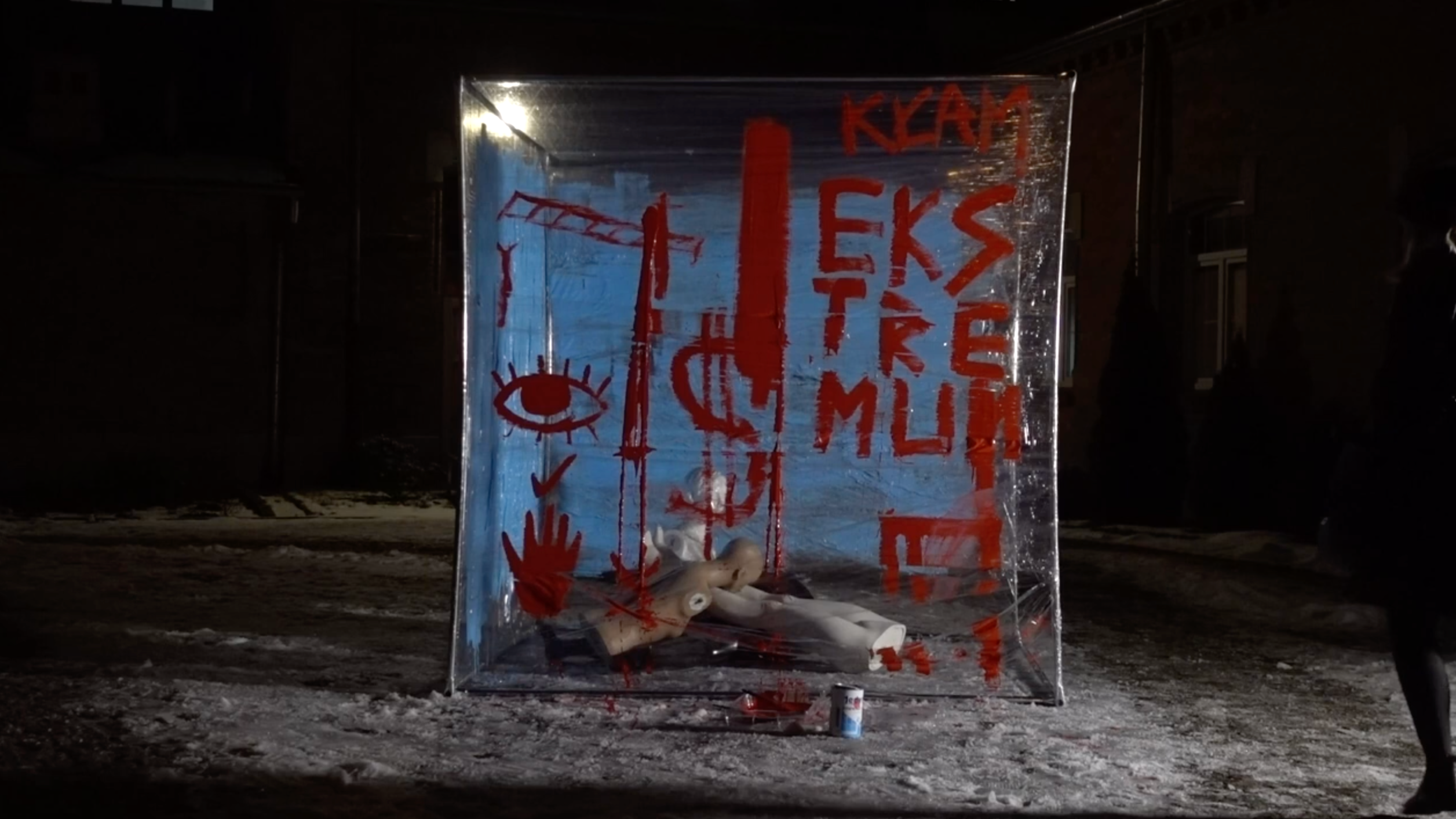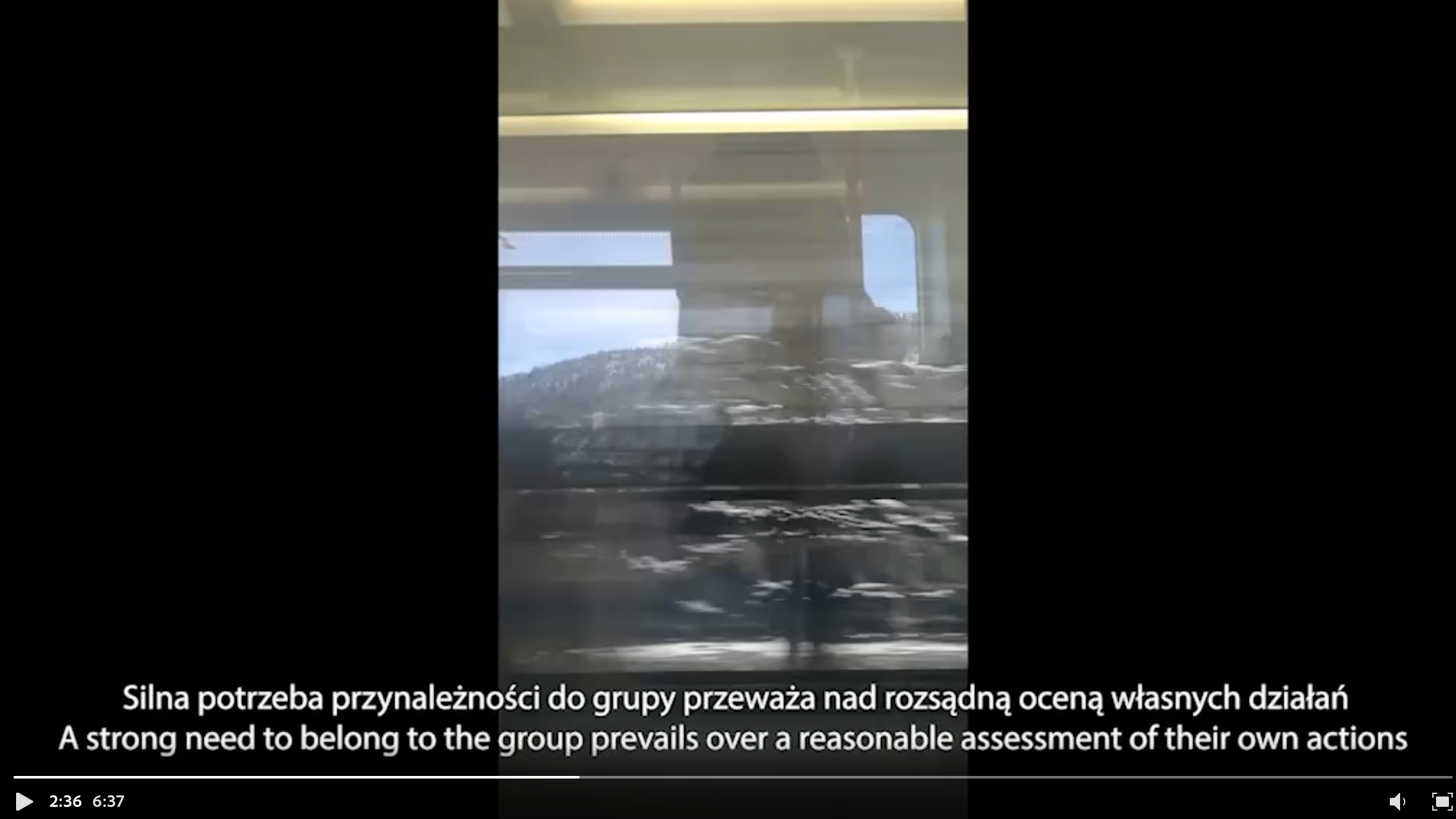(ENG)
Maciej Stańczak, Łukasz Biernat, Anna Zegar
2023, Łódź, Fashion Film Festival
The main goal of the project is to explore the issue of respecting the artist's work while simultaneously destroying the work. The project builds a closed loop of creation and processing. It is the process of combining ideas into one whole. It allows you to explore diverse concepts and perspectives that come together in one work, creating new meaning and context.
The basis of the design was hand-torn cotton canvas. Then the canvas was handed over to the artist, who began the process of painting the picture using special textile paints. This process was interrupted during the creation of the work, which gradually began to tear until the yarn was recovered and reworked. The result of this process is a unique dress whose pattern differs significantly from the original canvas, although it retains the same color palette.
We leave the end of the project open, without imposing a clear answer on the recipient to the question whether this action can be interpreted as the destruction of a work of art. The whole process is a commentary on the cooperation of great fashion houses that use the works of great artists to create products whose main goal is to sell as best as possible. This may lead to reflection on whether fashion, being a field of art, can also destroy works from other fields.
It is also worth emphasizing the important ecological aspect of this project, because the yarn used for the dress is 50% recycled. The dress was hand sewn with the same yarn. It can be recycled, in accordance with the principles of sustainable fashion.
(PL)
Maciej Stańczak, Łukasz Biernat, Anna Zegar
2023, Łódź, Festiwal Filmów o Modzie
2023, Łódź, Festiwal Filmów o Modzie
Głównym celem projektu jest zgłębienie problemu poszanowania pracy artysty przy jednoczesnym jej niszczeniu. Projekt buduje zamkniętą pętlę tworzenia i przetwarzania. Jest to proces łączenia pomysłów w jedną całość. Pozwala eksplorować różnorodne koncepcje i perspektywy, które łączą się w jednym dziele, tworząc nowe znaczenie i kontekst.
Podstawą projektu było ręcznie podarte płótno bawełniane. Następnie płótno zostało przekazane artyście, który rozpoczął proces malowania obrazu specjalnymi farbami do tkanin. Proces ten został przerwany w trakcie tworzenia dzieła, które stopniowo zaczęło się rozdzierać, aż do odzyskania i ponownej obróbki przędzy. Efektem tego procesu jest wyjątkowa sukienka, której wzór znacząco odbiega od oryginalnego płótna, choć zachowuje tę samą paletę barw.
Zakończenie projektu pozostawiamy otwartym, nie narzucając odbiorcy jednoznacznej odpowiedzi na pytanie, czy działanie to można interpretować jako zniszczenie dzieła sztuki. Cały proces jest komentarzem do współpracy wielkich domów mody, które wykorzystują prace świetnych artystów do tworzenia produktów, których głównym celem jest jak najlepsza sprzedaż. Może to skłaniać do refleksji, czy moda będąc dziedziną sztuki może niszczyć także dzieła z innych dziedzin.
Warto także podkreślić ważny aspekt ekologiczny tego projektu, gdyż przędza wykorzystana do produkcji sukienki pochodzi w 50% z recyklingu. Sukienka została uszyta ręcznie z tej samej włóczki. Można go poddać recyklingowi, zgodnie z zasadami zrównoważonej mody.
Warto także podkreślić ważny aspekt ekologiczny tego projektu, gdyż przędza wykorzystana do produkcji sukienki pochodzi w 50% z recyklingu. Sukienka została uszyta ręcznie z tej samej włóczki. Można go poddać recyklingowi, zgodnie z zasadami zrównoważonej mody.
